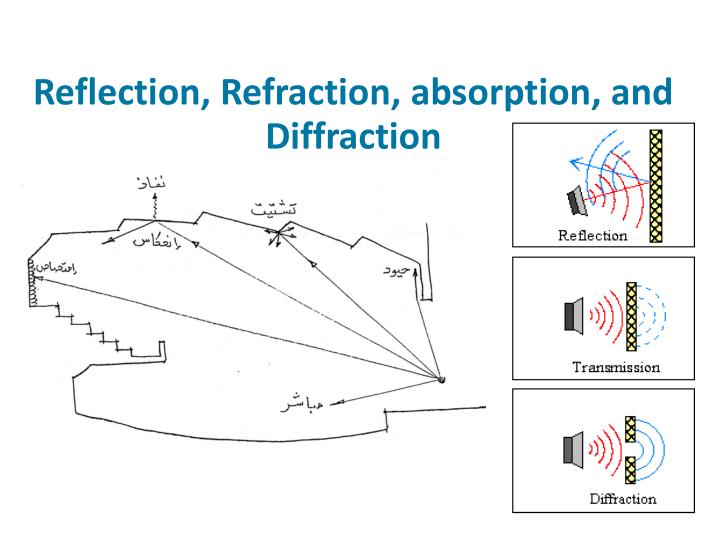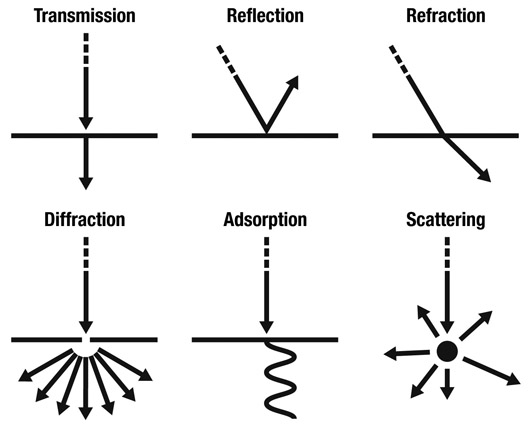
Because a sound wave propagates in a direction perpendicular to the wave front formed by all the Huygens’ wavelets, sound under these conditions tends to refract upward and become “lost.” The sound of thunder created by lightning may be refracted upward so strongly that a shadow region is created in which the lightning can be seen but the thunder cannot be heard. This greater speed of sound in warmed air near the ground creates Huygens’ wavelets that also spread faster near the ground. Because sound waves propagate faster in warm air, they travel faster closer to the Earth. The heated air then cools as it rises, creating a gradient in which atmospheric temperature decreases with elevation by an amount known as the adiabatic lapse rate. Under normal conditions the Sun heats the Earth and the Earth heats the adjacent air. An important refraction of sound is caused by the natural temperature gradient of the atmosphere. Refraction is the reason why ocean waves approach a shore parallel to the beach and why glass lenses can be used to focus light waves. This phenomenon involves the bending of a sound wave owing to changes in the wave’s speed. Another important case in which sound waves bend or spread out is called refraction.

Britannica Beyond We’ve created a new place where questions are at the center of learning.100 Women Britannica celebrates the centennial of the Nineteenth Amendment, highlighting suffragists and history-making politicians.
REFRACTION AND DIFFRACTION HOW TO
COVID-19 Portal While this global health crisis continues to evolve, it can be useful to look to past pandemics to better understand how to respond today.Student Portal Britannica is the ultimate student resource for key school subjects like history, government, literature, and more.




 0 kommentar(er)
0 kommentar(er)
